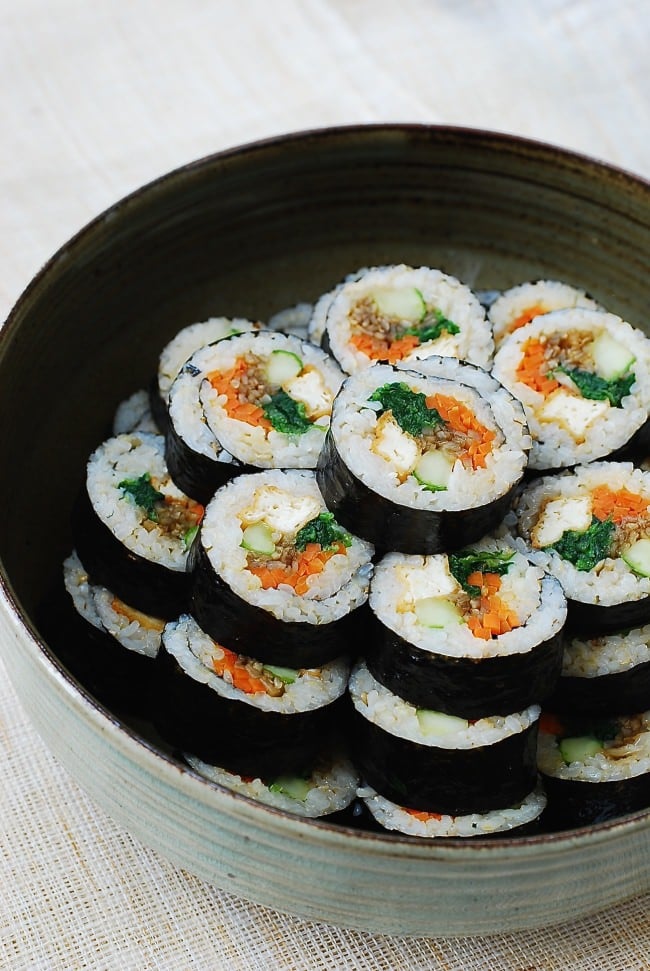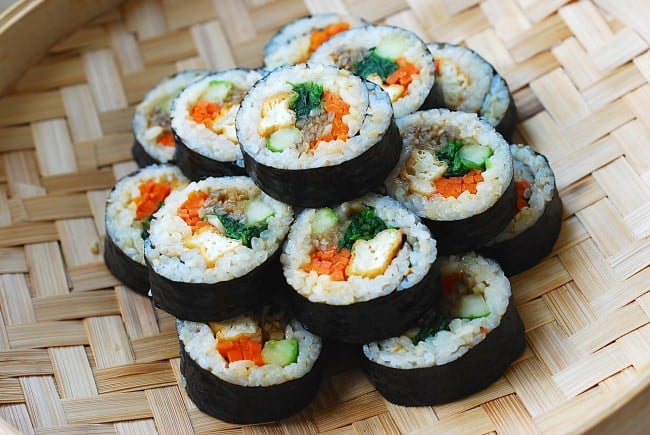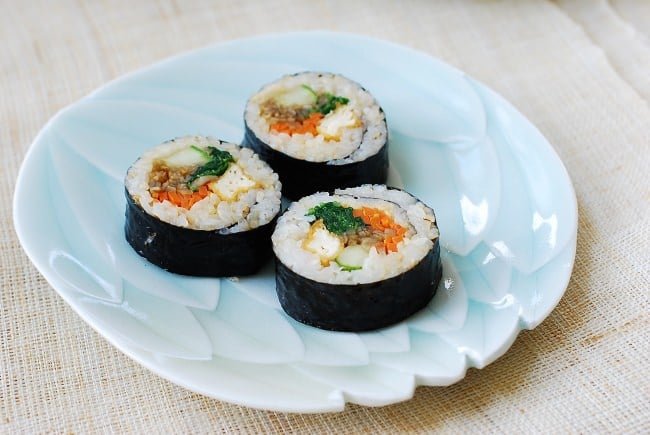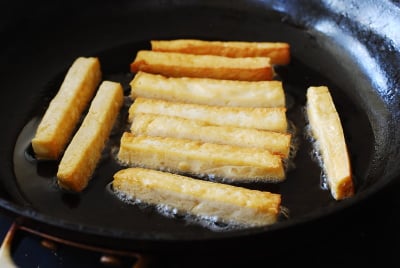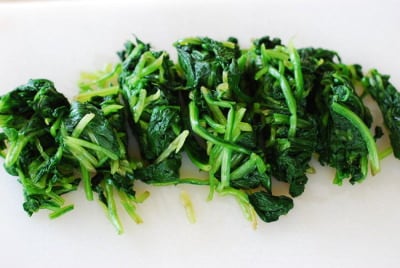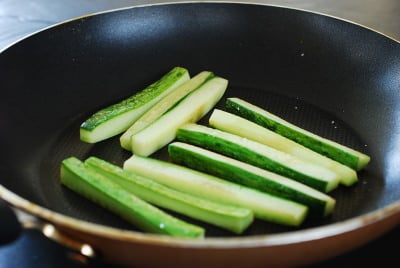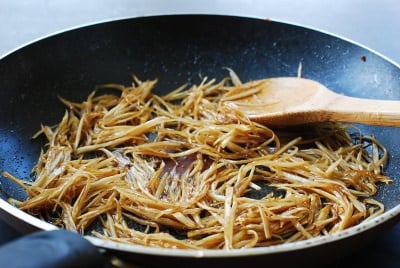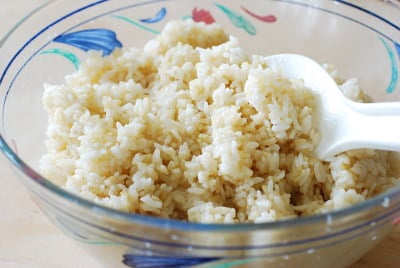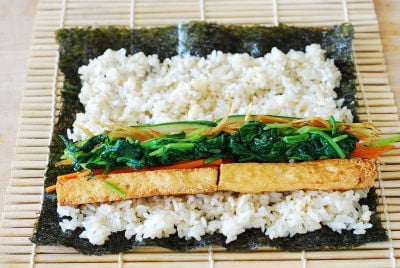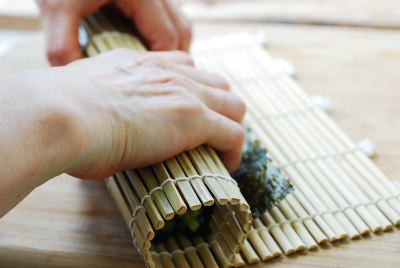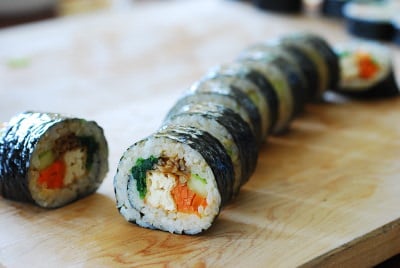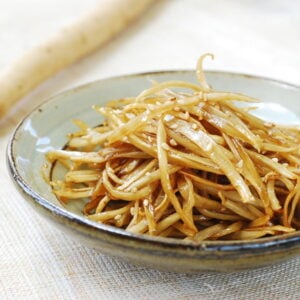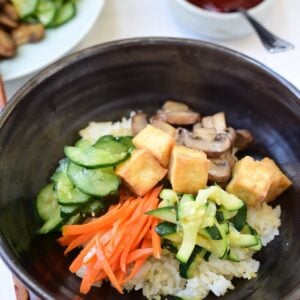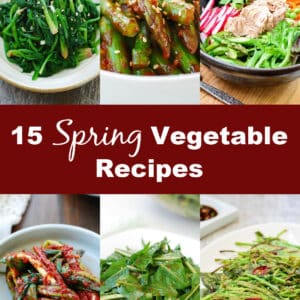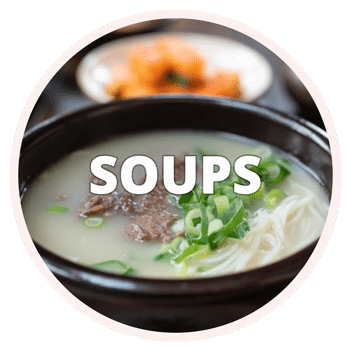This kimbap recipe uses tofu instead of meat, so it’s vegan kimbap! Frying gives the tofu a nice texture and flavor. You won’t miss the meat.
I’m finally sharing this kimbap (or gimbap) recipe I made last summer for visitors from a Korean TV network, BTN (Buddhist Television Network). They were traveling to film a documentary about Korean temple cuisine in America. I made some temple dishes – kimbap and hobak mandu (zucchini dumplings), and shared my thoughts on them for their program.
The kimbap recipe came from the book titled “ Temple Food of Venerable Seonjae”, which is authored by a Buddhist nun, Ven. Seonjae (선재스님), a master of Korean temple cuisine.
This vegan kimbap recipe replaces the meat in the traditional kimbap with tofu and also uses homemade braised burdock root (ueong jorim) as a filling. The tofu is shallow-fried in oil until golden brown and crispy. Frying gives the tofu a nice texture and flavor.
You can buy burdock root pre-made for gimbap in the refrigerated section of a Korean market, but temple food is all about fresh vegetables and homemade ingredients. It’s pretty simple to make at home!
I’ve made this tofu gimbap several times since the BTN visit. Loved it every time! You won’t miss the meat. It’s perfect if you are looking for a vegan gimbap recipe!
For more Korean cooking inspirations, follow along on YouTube, Pinterest, Twitter, Facebook, and Instagram.

Ingredients
- 5 gim aka nori sheets
Rice
- 2 cups uncooked short grain rice standard measuring cup not the cup that comes with a rice cooker - see note
- 1 tablespoons sesame oil
- salt to taste start with 1/2 teaspoon
For the fillings
- 10 ounces firm tofu
- 1 bunch spinach about 8 ounces
- 1 teaspoon sesame oil
- 3 kirby cucumbers
- 2 medium carrots
- 1 burdock root uoeong, braised - see the recipe
- sesame oil
- salt
- cooking oil
Instructions
- Cook the rice using a little less water than usual. Fresh cooked rice is best for gimbap.
- When all the other ingredients are ready, remove the rice from the rice cooker. While the rice is still hot, add the sesame oil and salt. Mix well by gently folding with a rice paddle or large spoon until evenly seasoned. Add more salt to taste. The rice will cool down during this process and be ready to be used.
- Lift the entire bottom edge with both hands and roll over the filling away from you, tucking in the filling with your fingers. Put firm pressure over the roll with the help of the bamboo mat, if using, to close everything in tightly. Then, continue to roll again, putting pressure evenly over the roll using both hands.
- Rub or brush the roll with a little bit of sesame oil for extra flavor and shiny look. Apply a little bit of sesame oil to a sharp knife. This will keep rice from sticking to the knife. Repeat as necessary after each cut. Wipe the knife with a damp towel if the rice still sticks. Cut the roll into 1/2-inch thick bite sizes.


